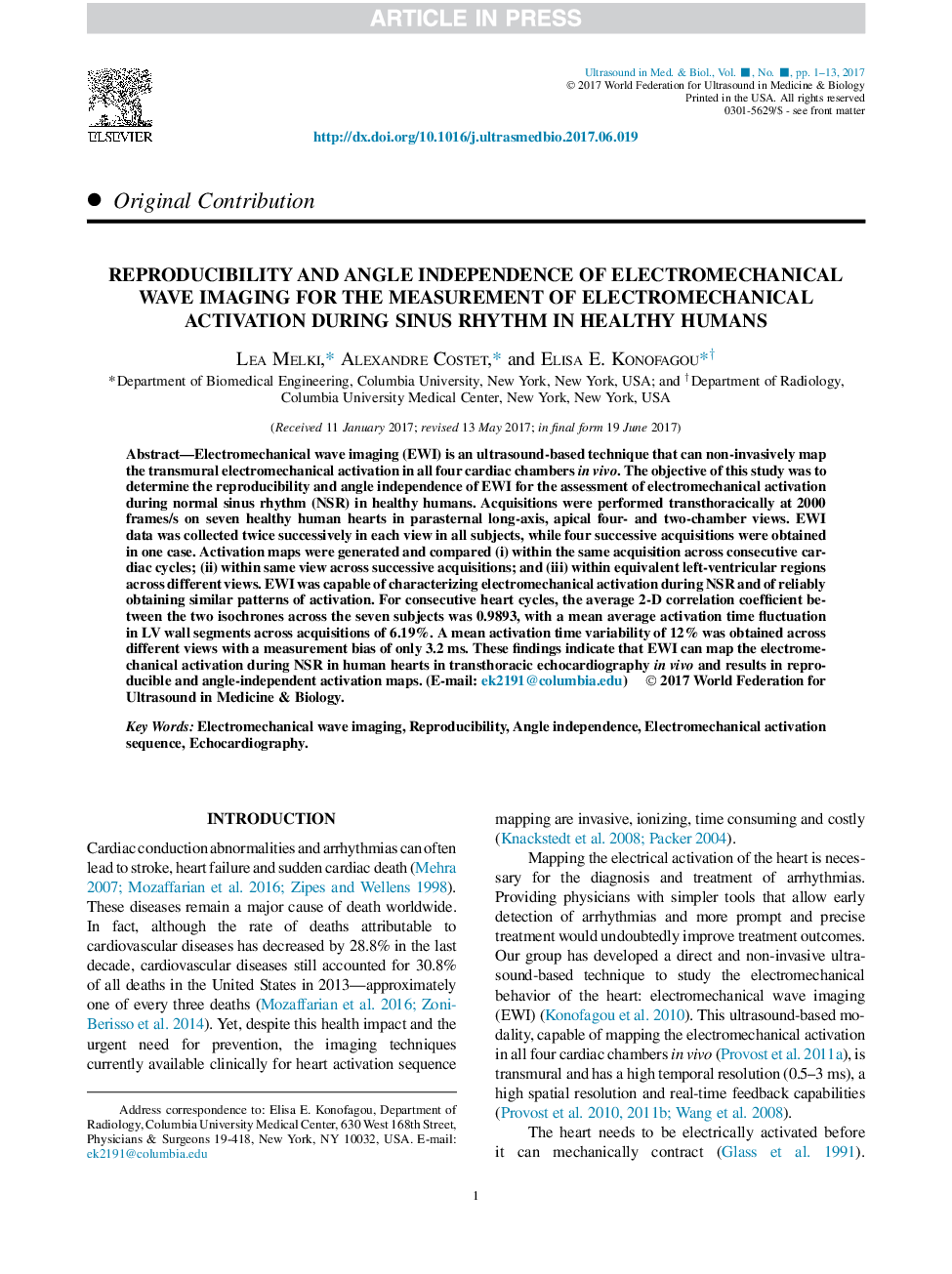| Article ID | Journal | Published Year | Pages | File Type |
|---|---|---|---|---|
| 5485562 | Ultrasound in Medicine & Biology | 2017 | 13 Pages |
Abstract
Electromechanical wave imaging (EWI) is an ultrasound-based technique that can non-invasively map the transmural electromechanical activation in all four cardiac chambers in vivo. The objective of this study was to determine the reproducibility and angle independence of EWI for the assessment of electromechanical activation during normal sinus rhythm (NSR) in healthy humans. Acquisitions were performed transthoracically at 2000 frames/s on seven healthy human hearts in parasternal long-axis, apical four- and two-chamber views. EWI data was collected twice successively in each view in all subjects, while four successive acquisitions were obtained in one case. Activation maps were generated and compared (i) within the same acquisition across consecutive cardiac cycles; (ii) within same view across successive acquisitions; and (iii) within equivalent left-ventricular regions across different views. EWI was capable of characterizing electromechanical activation during NSR and of reliably obtaining similar patterns of activation. For consecutive heart cycles, the average 2-D correlation coefficient between the two isochrones across the seven subjects was 0.9893, with a mean average activation time fluctuation in LV wall segments across acquisitions of 6.19%. A mean activation time variability of 12% was obtained across different views with a measurement bias of only 3.2 ms. These findings indicate that EWI can map the electromechanical activation during NSR in human hearts in transthoracic echocardiography in vivo and results in reproducible and angle-independent activation maps.
Related Topics
Physical Sciences and Engineering
Physics and Astronomy
Acoustics and Ultrasonics
Authors
Lea Melki, Alexandre Costet, Elisa E. Konofagou,
